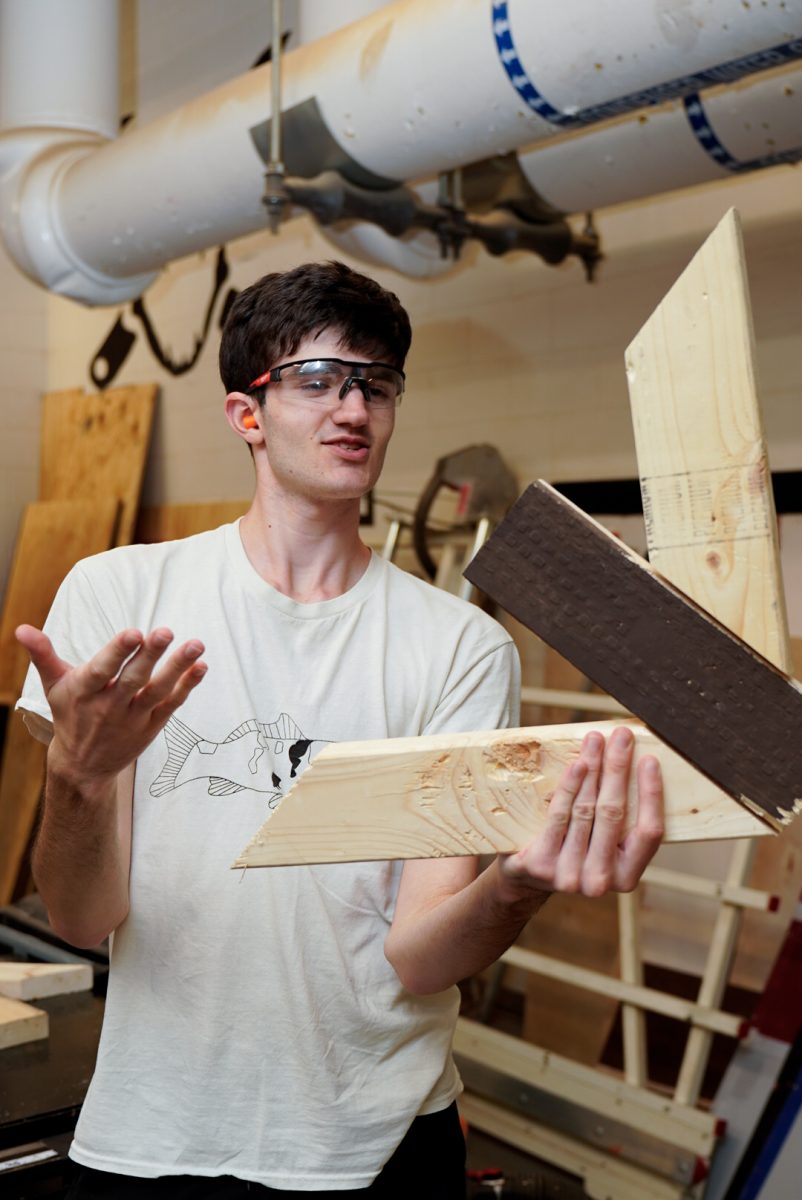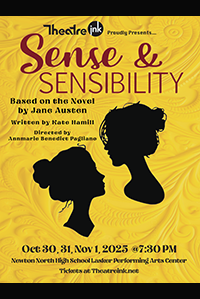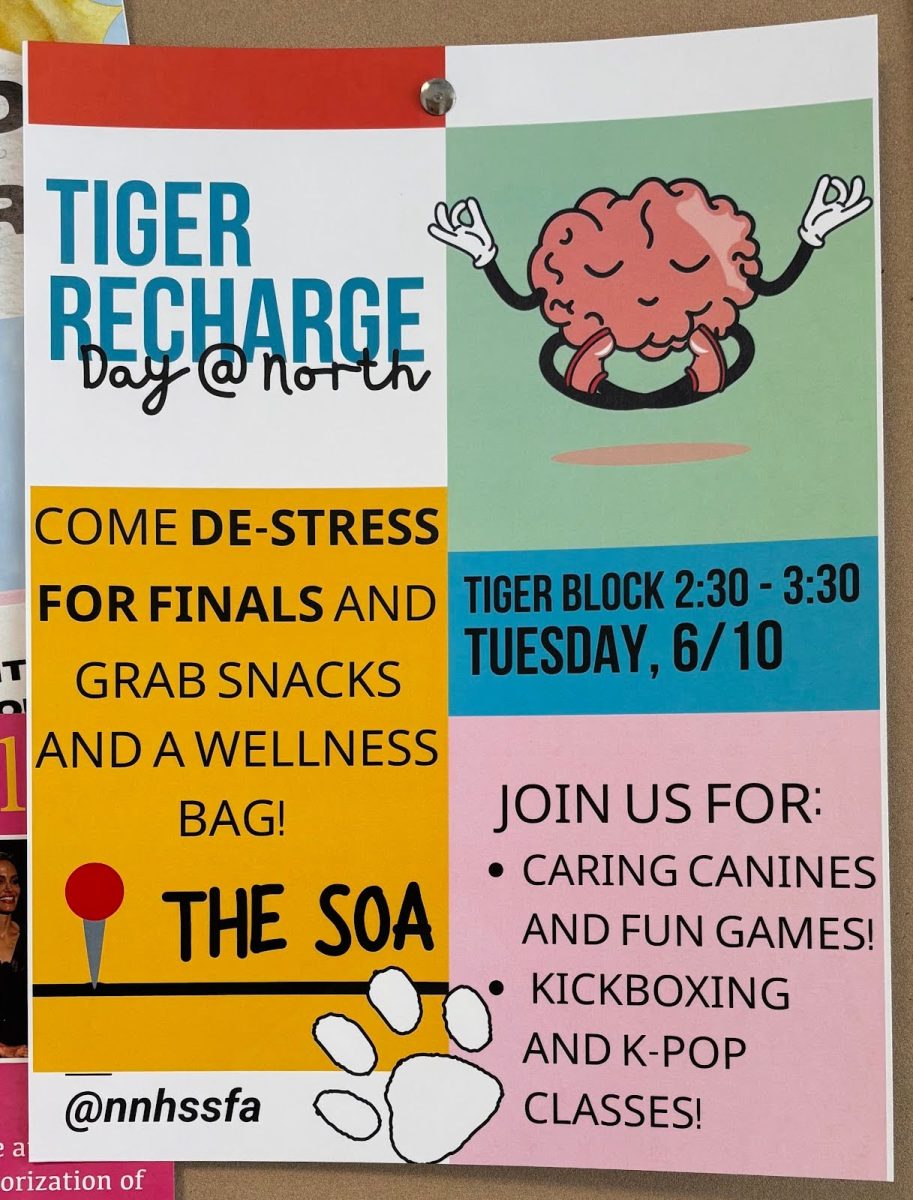 [/media-credit]
[/media-credit]
- Junior Nick Lailler uses an iPad in the Library Learning Commons.
by Samantha Libraty
Today, heavy textbooks weigh down students’ backpacks. Tomorrow, students could carry sleek, light-weight tablets instead.
The department heads at this school and South; the curriculum coordinators for the elementary and middle schools; and deputy superintendent of teaching and learning Ann Koufman have been discussing the switch to tablets instead of textbooks, according to Koufman. No official plan have been made yet, she said.
“In an age where information is at one’s fingertips, it is important that our students are prepared for their futures, so we are exploring new technologies to help them do that and figuring out new ways to learn,” she said.
The department heads and curriculum coordinators were given iPads to test out digital learning, she said. They are exploring the benefits of immediate accessibility and an interactive learning style.
“A tablet is much more interactive and has multimedia options, while a paper textbook does not,” Koufman said.
Science department head Amy Winston, who is involved in assessing the switch to digital learning, said that in the near future, the science department is interested in using tablets instead of Advanced Placement Biology textbooks. This school needs a new set of books for next year, and tablets would be beneficial both academically and financially, she said.
“Electronic texts can be constantly updated, which is especially important to our biology curriculum, because new discoveries are found in the field of biology every day,” she said.
“One of the reasons I’ve been interested in the switch to tablets is because it will allow students to access other resources and will give students tools to continue their learning,” she added.
A major selling point in the switch to electronic textbooks is the price, Winston said.
An AP Biology paper textbook is $200, while the digital and interactive version is between $15 and $85, she said. Tablets cost hundreds of dollars but can be reused and updated, unlike paper textbooks.
Koufman said, “Digital content also gives students a chance to pursue topics anytime and anywhere. If there is a concept you don’t understand, you could go home and work with the content and interactive resources on the tablet. This gives a student the ability to personalize their learning.”
“We have to be looking forward to different learning options because we want to ensure that our students are prepared for college and the future workforce. The future consists of digital learning, and we want students to learn how to use these resources effectively in order to succeed,” she said.
Because administrators are discussing different options, the switch will not happen immediately, and nothing has been finalized, she said. In the next few months, the curriculum coordinators, department heads and Koufman will work together to decide a course of action.
“We are trying to do this thoughtfully. We want to think about the needs of students and think about how they can learn best with digital devices in school,” Koufman added.
While researching tablets, Koufman said she has visited other schools in the state who use a digital learning model.
“All of Burlington High School’s students have tablets to use in school and out,” she said. Koufman has been in contact with Burlington administrators to see how their system works.
“Our goal is to have the whole district be on the digital learning path, and we are exploring many different options,” Koufman said.
She said, “We hope we can find a balance between digital content and keeping our students interested and prepared, and I can assure you that books will not go away.”







































